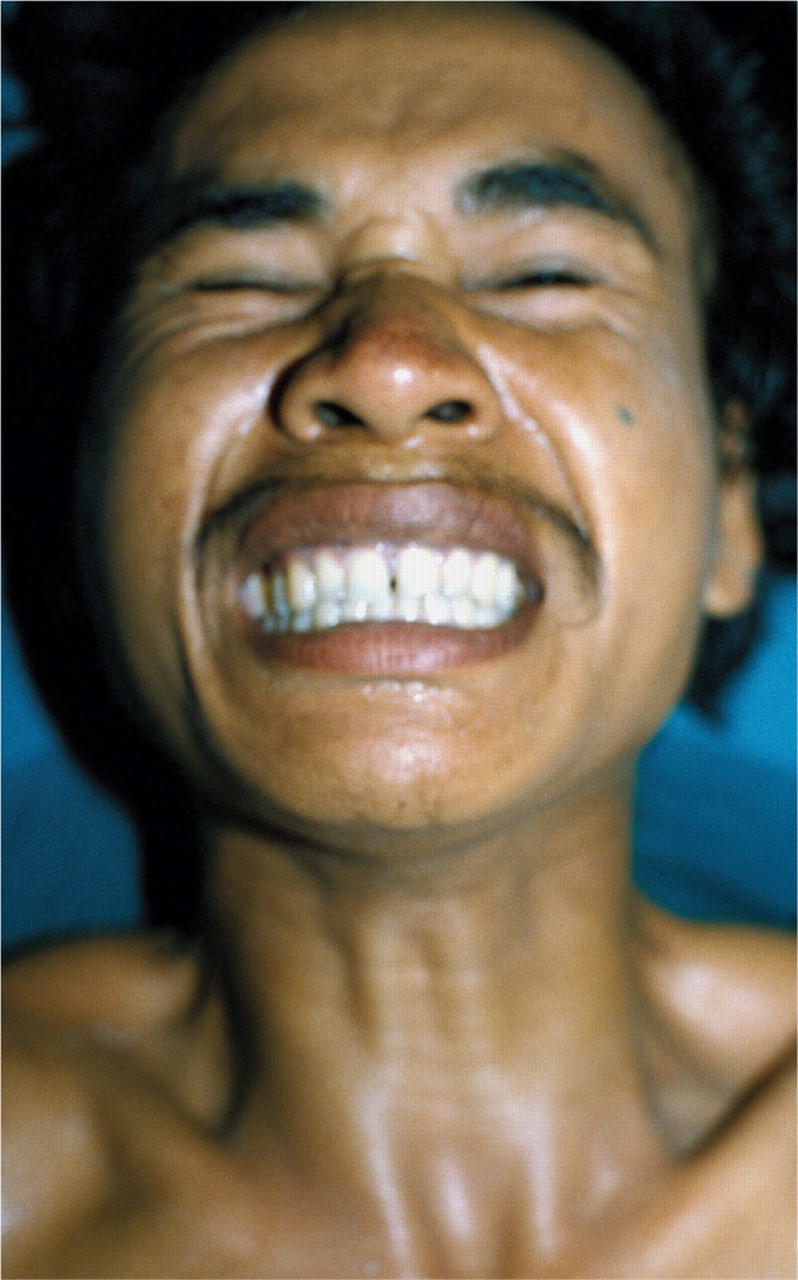Page Contents
WHAT IS IT?
Tetanus is a nervous system disorder characterized by muscle spasms that is caused by the toxin-producing anaerobe Clostridium tetani, which is found in the soil. The toxin produced by the pathogen: a potent metalloprotease exotoxin (tetanospasmin), binds to receptors on the presynaptic membranes of peripheral motor neurons. From there it migrates by retrograde axonal transport to central inhibitory neurons in the spinal cord and brain stem and prevents release of the inhibitory neurotransmitters glycine and GABA. Suppression of inhibitory nerve activity results in increased activation of motor nerves, causing muscle spasms and hyperreflexia.
WHY IS IT A PROBLEM?
Eventually the muscle spasms will become so advanced that the patient will be unable to operate them (i.e. will no longer be able to open mouth to chew food).
WHAT MAKES US SUSPECT IT?
Risk factors: puncture wounds + contact with soil, lack of vaccinations, trauma, chronic wounds (such as diabetic ulcer).
Trismus: The term “lockjaw” (now called trismus) is one of the cardinal features of tetanus: intense painful spasms of the masseter muscles.
Risus sardonicus, a characteristic facial expression arising from spasm of facial muscles

*Generalized muscle spasms and rigidity
HOW DO WE CONFIRM A DIAGNOSIS?
*Culture, histopathology, or serology may confirm diagnosis but are rarely used due to low sensitivity, low specificity, and long turnaround times.
Clinical presentation is commonly used to make the diagnosis.
HOW DO WE TREAT IT?
*Admission to intensive care unit for close monitoring and airway management
Treat with antitoxin +/− vaccine booster: single intramuscular dose of human tetanus immune globulin (TIG).
Diazepam for muscle spasms. This is benzodiazepine medication.
*Also can consider giving antibiotics to stop toxin production (however the efficacy of this is not well characterized).
HOW WELL DO THE PATIENTS DO?
Illness may persist for several weeks to months before gradually subsiding.
Mortality is fairly high, but very reduced if patients are admitted to ICU (10-20% in this setting).
WAS THERE A WAY TO PREVENT IT?
Prevent with tetanus vaccine (diphtheria):
DTaP: combination vaccine: diphtheria, tetanus, acellular pertussis
Vaccine: is made up of inactivated toxins.
WHAT ELSE ARE WE WORRIED ABOUT?
Arthur’s reaction (type III hypersensitivity): this can occur after administration of tetanus vaccine in a small group of patients. It is a local vasculitis associated with deposition of immune complexes and activation of complement
OTHER HY FACTS?
Tetanus toxin (and botulinum toxin) are proteases that cleave SNARE proteins for neurotransmitters. Blocks release of inhibitory neurotransmitters, GABA and glycine, from Renshaw cells in spinal cord.
FURTHER READING
Page Updated: 02.04.2016